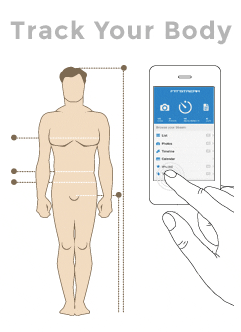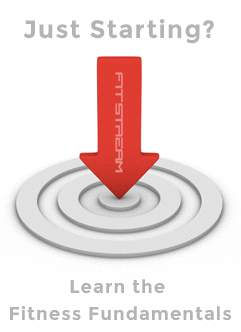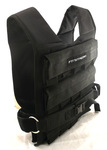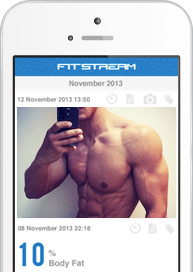How to do the ring Muscle-up with false grip
- Hold the rings with a false grip position (described below).
- Pull yourself up to the rings (see pull-up exericse for breakdown).
- Now you need to do the transition and at the top of the pull-up bring your whole upper body over the rings. Move your shoulders over your hands, the elbows should curve round to your ribs and then back behind the body.
- Your body should be above the rings and you can press yourself up into the support position.
- Dip back down and reverse the exercise, returning to the start position. Repeat.
How to do the ring Muscle-up without false grip
- Grip the rings and hang freely below them, supporting your body weight.
- Pull yourself up to the rings.
- The aim here is to generate just enough power so that you can hoist yourself above the rings. At the top of the pull-up kick out with your feet or knees, lean forward at the waist and thrust yourself up and over the rings into the dip positon.
- Press yourself up into the support position.
- Dip back down and reverse the exercise, returning to the start position. Repeat.
Notes:
- A highly effective and challenging exercise - the ring muscle-up is essentially composed of three parts, a pull-up, transition motion and ring dip.
- The transition is the most difficult part and you should master the false grip to achieve it.
Muscle-Up Guide
The ring muscle-up is an incredible upper-body exercise and demonstration of both strength and technique. The ability to start below the rings and finish above them in one movement is an acquired skill that on average, few can perform.
The muscle-up is a notoriously difficult exercise to master and a firm favourite in the CrossFit gym, essentially combining a pull-up and dip into one flowing movement. It requires the coordinated effort of almost all upper body muscles with focus upon the pecs, shoulders and triceps and will take dedicated training to achieve.
That being said it's a great challenge to set yourself, shows a tremendous level of strength-to-bodyweight and is a highly impressive functional movement.
Training for the muscle-up
Much of the muscle-up is about technique rather than pure strength and here are some pointers to help you on your way. Muscle-ups are essentially composed of:
- Pull-up
- Transition
- Dip
You should start by mastering the ring pull-up and dip exercises individually and then work on combining the two into a muscle-up.
The transition is the most difficult part of the exercise and is the part where you move from the top of the pull-up, below the rings to above them so you can press the body up to the support position.
As you pull-up the rings will reach your armpits. Keep the rings tight to the body and continue the upward motion whilst rolling your shoulders forward and over the hands. Your elbows will curve round and back behind the body. To do this, you should learn what is known as a false grip (shown below).
The false grip
The false grip is a different way of positioning your hands on the rings which allow you to more easily move between the stages of the muscle-up.

The hands should be moved upwards, so that they sit on the rings at the bottom of the palms and wrists, rather than the hands and fingers. This will take some practice if you are new to the false grip. You can begin by using this technique on pull-ups or body rows first to build up the wrist strength. With the wrists above the rings you should have the leverage for the transition.
You don't have to use the false grip for the muscle-up, but for beginners this approach makes it much easier and without it you'll need to swing or kick your way above the rings (kipping). If you are using the kipping technique for the muscle-up it's recommended that you try to phase this out as you become stronger over time to perform a strict muscle-up.
Muscle-up Tips
- Muscle-up jumps - Lower the height of the rings, use the ground as a starting position and jump into the exercise. As you get stronger raise the rings higher and higher until you no longer need to exploit the momentum of the jump.
- Leg assisted muscle-up - Supporting one or two (easier) feet on a box or bench can be quite effective and reduces the amount of body weight being used during the exercise.
- Band assisted muscle-up - similar to the leg assists, resistance bands are a great way of supporting some of your bodyweight to make the exercise more achievable. Use lighter bands, or lengthen the bands as you become stronger.
- Practice weighted pull-ups and dips to develop phenomenal strength that will really help when training for the muscle-up.
- Use the legs to get up-and-over the rings (kipping technique) by kicking or swinging out to gain extra momentum. Try to phase this out over time as you gain in strength.
 Fitstream AppTrack your fitness progress and see the difference for yourself with our free app
Fitstream AppTrack your fitness progress and see the difference for yourself with our free app














